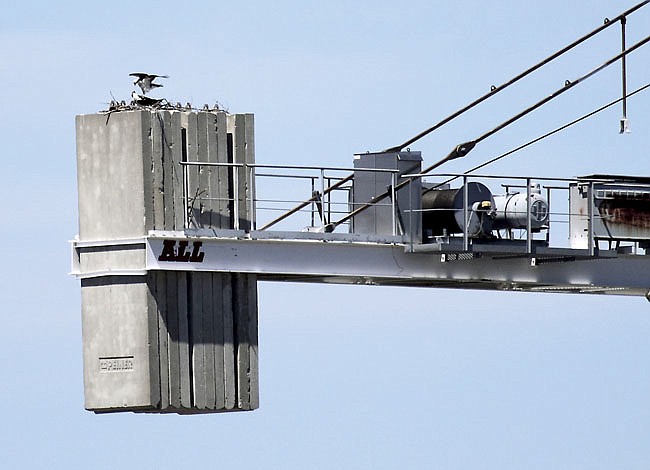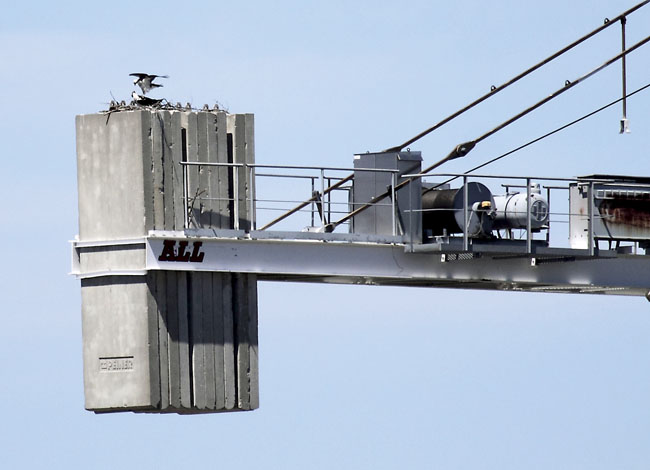Not discouraged by losing a home on a power tower near the Chickamauga Dam to a tornado last October, a pair of ospreys has returned to nest on a crane stationed near the new lock construction site.
These birds, part of a population once considered endangered, seem to have taken to risk: They're content to put up with the crane's movement, and ride it out, according to members of the Riverwalk Bird Club.
"The government shuts down building the lock, but the ospreys' construction plans are in full swing," quipped birdwatcher Harold Sharp.
Sharp said the pair began building about two weeks ago on the crane's counterweight while the crane wasn't moving much because work on the lock has stalled.
But he said workers with the U.S. Army Corps of Engineers, which has been building a larger lock at the dam, know about the nest.
"We saw the crane operator out looking at the ospreys over the past few days," Sharp said. "I saw the male bring a fish to the female on the nest as the crane was moving around.
Like eagles, ospreys maintain the same nests from year to year, building and repairing them with large sticks. Unlike eagles, they rarely seek privacy, so nature watchers are more likely to see their nests and daily routines, according to a Tennessee Valley Authority website.
TVA biologist Hill Henry states on the website that ospreys, endangered by pesticide use, have rebounded with the help of environmental laws and endangered species programs.
Ospreys, which feed almost exclusively on fish, often build their nests atop channel markers and dead trees - any tall open surface with an unobstructed view of the water.
Sharp said Riverwalk birders have been watching for this pair and were anxious to see if they would return.
"For the past three years they have built on the tall steel [power line] tower less than 100 yards from [the new nest]. From this steel tower you can throw a rock to the railroad bridge that had a peregrine falcon nest for over 14 years," Sharp said.
From the same spot, he said, a pebble thrower could hit a great horned owl nest in a pine tree just under the tower, or a ring of cliff swallow nests under the bridge, or a red-tailed hawks' nest just north of the bridge.
"Can anyone beat that for a birding location?" said Sharp.

